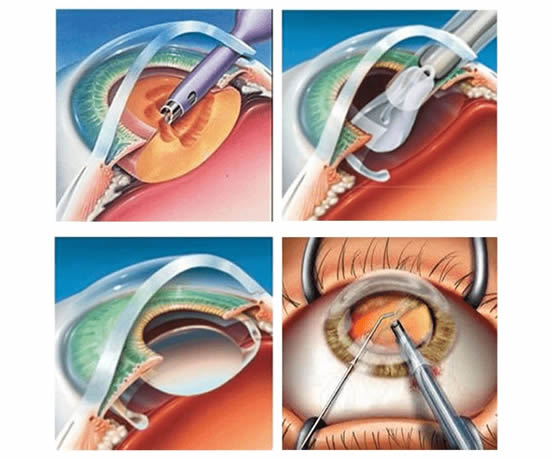.jpg)
A cataract is a clouding of the natural lens in the eye that affects vision. The lens is a clear part of the eye that helps to focus light, or an image, on the retina. The retina is the light sensitive tissue at the back of the eye. In a normal eye, light passes through the transparent lens to the retina. Once it reaches the retina, light is changed into nerve signals that are sent to the brain. The lens must be clear for the retina to receive a sharp image. If the lens is cloudy from a cataract, the image will be blurred.
Symptoms of Cataract
- Cloudy or blurry vision.
- Difficulty driving at night
- Difficulty reading or watching television.
- Difficulty in recognizing colours. Colors seem faded.
- Glare at night.
- Haloes around lights.
- Poor night vision.
- Double vision or multiple images in one eye.
- Poor vision in bright light
- Frequent prescription changes in eyeglasses or contact lenses.
Treatment for Cataract
There are no medicines with proven efficacy to prevent or treat cataract. The only effective treatment for cataract involves surgery is to remove the cataract and replace it with an intraocular lens implant. It is the most common Modern Technique which is used for removal of cataract is known as Phaco / MICS. Cataract surgical procedure around the world and is considered to be extremely successful and safe. Diabetes, hypertension and other general health problems are not a contraindication for cataract surgery and the cataract need not ‘mature’ for surgery.

Types of cataract surgery
There are two types of cataract surgery. Your doctor can explain the differences and help determine which is better for you:
- MICS 2.2 (Topical)
- Phaco 2.8 (Topical)
Types of Intraocular Lenses (IOLs)
Monofocal: The monofocal lens has one point of focus, which is usually set for your distance vision. However, near vision will appear blurred, requiring glasses for intermediate and near work.
EDOF: Extended depth-of-focus (EDOF) is a new intraocular lens (IOL) technology for treating presbyopia. Unlike multifocal (MF) IOLs, EDOF lenses create a single elongated focal point, enhancing depth of focus and reducing glare and halos. EDOF lenses are most suitable for younger individuals who frequently use monitors.
Trifocal: Trifocal lenses correct three types of vision: close-up, intermediate, and distance. However, they are associated with photic phenomena such as glare and halos, making them less ideal for young individuals. They are best suited for housewives and older individuals.
Toric: A Toric IOL is an intraocular lens designed to neutralize astigmatism by being arranged in a specific manner in the eye. It is the IOL of choice for individuals with astigmatism (cylindrical power) and is available in all types of IOLs: Monofocal, EDOF, and Trifocal.